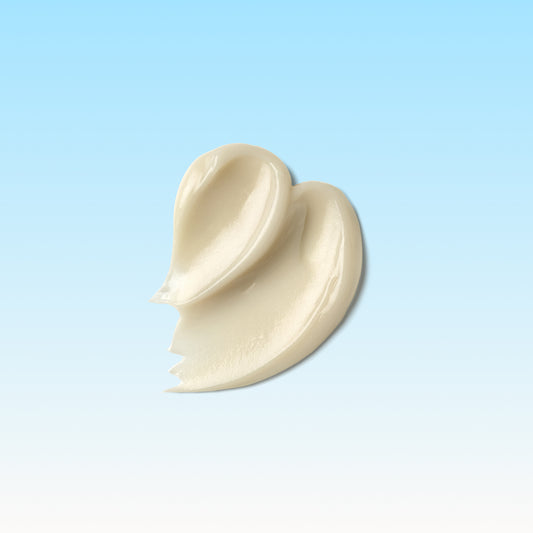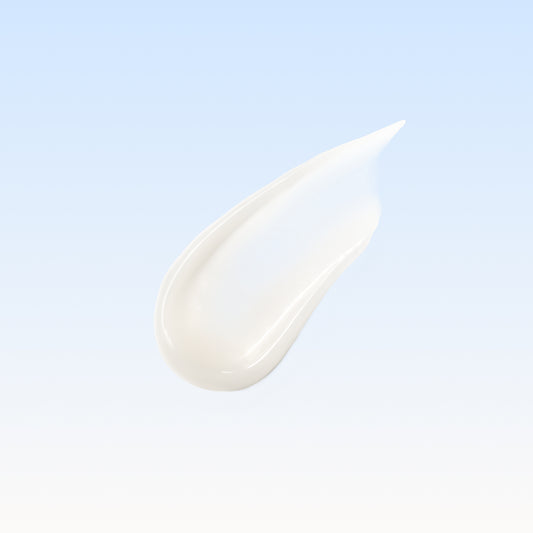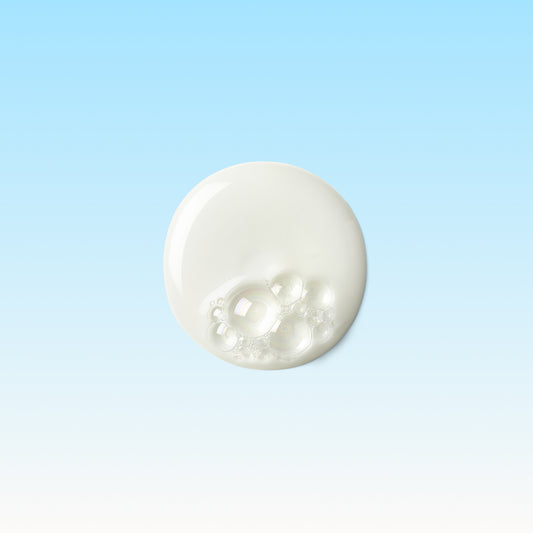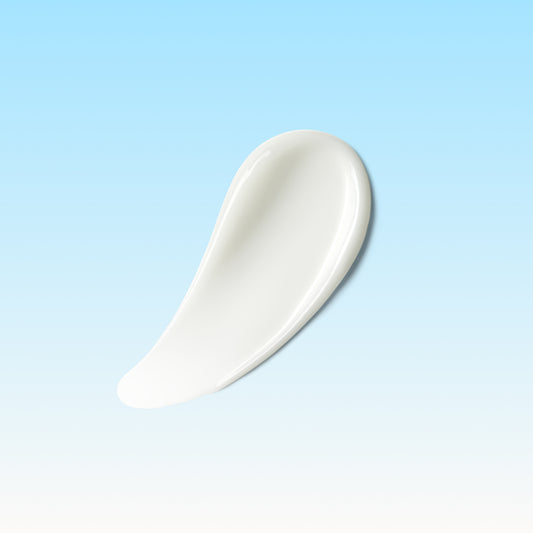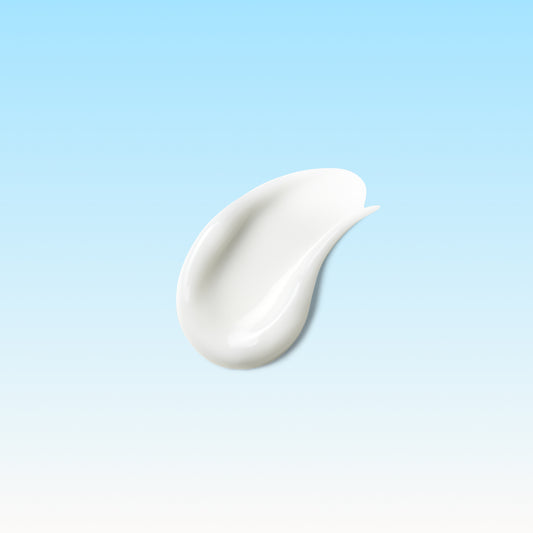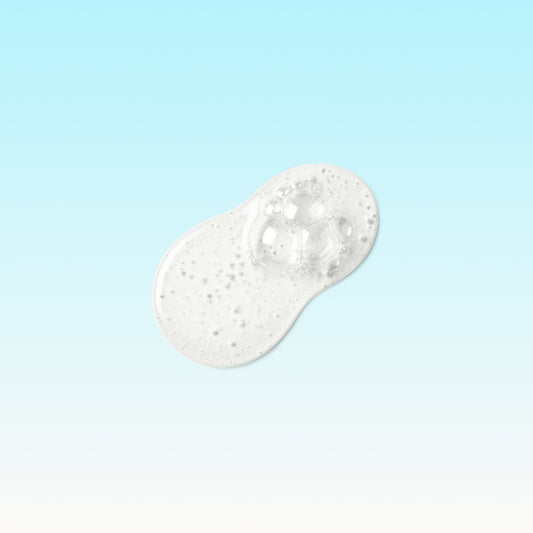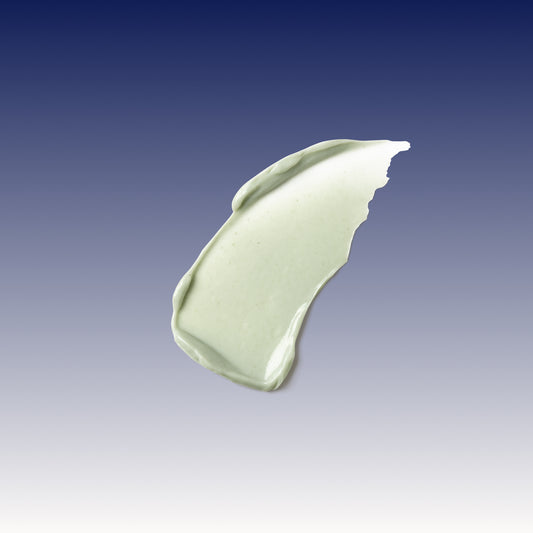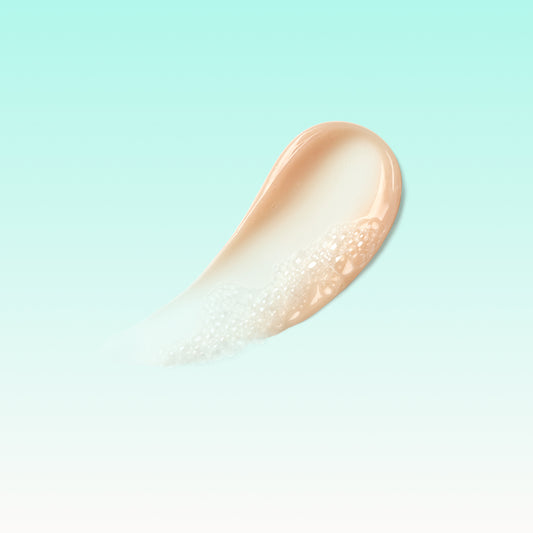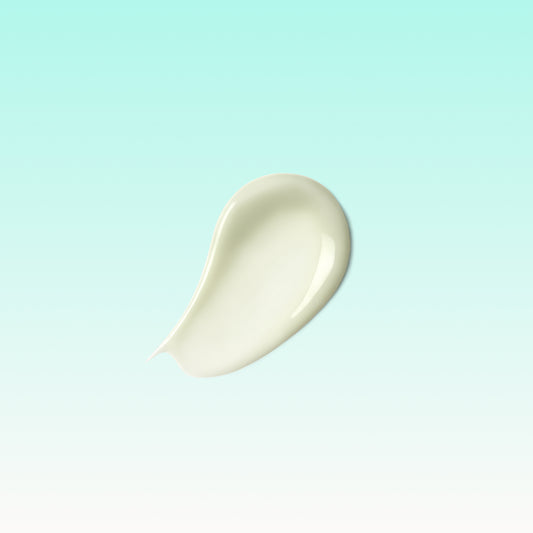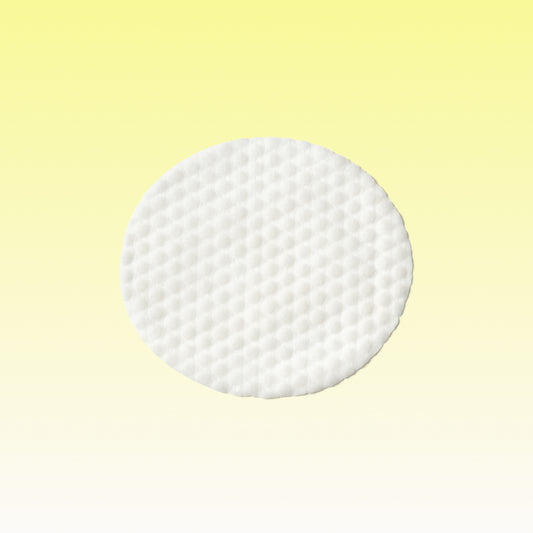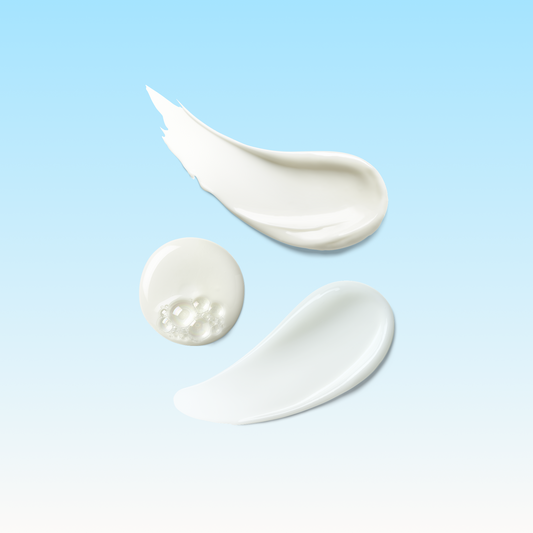S2:E6 Bioengineering The Future of Beauty with Jasmina Aganovic
[Amy Gordinier]: Total Skin Nerds is brought to you by Skinfix. We're clean, clinically active, and on a mission to deliver healthy skin.
Welcome to Total Skin Nerds. I'm Amy Gordinier, founder of Skinfix. Total Skin Nerds is where I get to nerd out with some of the world's foremost experts in skin. We deep dive into issues related to skin disease, skincare ingredients, diet and lifestyle modifications to support skin health, and even spiritual practices and their skin benefits. For season two, episode six of the Total Skin Nerds podcast, I'm excited to speak today with Jasmina Aganovic. Jasmina is a beauty industry professional with a degree in chemical and biological engineering from MIT, who is driving innovation for and within the entire beauty space, as well as for consumers throughout the world. As the founder and CEO of Arcaea, Jasmina leverages the power of expressive biology to create a new wave of beauty products, creating advanced trailblazing ingredients that are safe and sustainably sourced.
I'm here with Jasmina to talk all things science, skincare and sustainability, and how biology is a creative tool to grow new ingredients and product experiences today and well into the future. I think you'll see that Jasmina Aganovic is definitely a fellow skin nerd in every respect, and you'll understand the reason why she is at the forefront of this bold era where beauty and bioengineering meet. The science of skincare, specifically as it relates to safe ingredients and sustainability, is my love language, and the achievements and innovations that Jasmina and Arcaea are producing using biology as a creative design tool are totally inspiring.
Before we dive in, I want to take a moment to thank everyone for listening to the podcast. The Skinfix Team and I would love to hear more from you. Please take a moment to leave us a review and let us know what you'd like to hear more of. We would really appreciate it. Stay tuned, skin nerds, this is going to be an amazing conversation.
[Speaker 2]: Nerds.
[Amy Gordinier]: Thank you so much, Jasmina Aganovic, for joining us on Total Skin Nerds podcast.
[Jasmina Aganovic]: Thanks so much for having me.
[Amy Gordinier]: It's really exciting to have you here. Jasmina is the CEO of Arcaea, which is an incredible biotech company that we're going to learn a little bit more about. Before we start or as we start, can you explain why you started Arcaea and your background sort of leading up to launching the company?
[Jasmina Aganovic]: Sure. I'll start a little bit with my background because I think it helps kind of contextualize why we are building Arcaea the way that we are. I'm a technical founder, so my background is in chemical and biological engineering, and my whole career has been in beauty and personal care where I've focused mostly on innovation. As you know, most of this industry is based in chemistry. And that was really the early stage of my career, that at a certain point I started to see how chemistry was not really going to get us to the type of future that we wanted to have. So chemistry, much of it is very extractive, it's not sustainable. And then also there's just new levels of performance that I think consumers are asking for. So I became very interested in biology as potentially a new tool, and we'll talk a little bit more about that later I'm sure. But the ability to introduce a new tool to continue to grow this industry in a way that's aligned with the future values that we have is really the starting point for Arcaea.
[Amy Gordinier]: Amazing. You talked about chemistry being extractive, and sustainability is something I think most of us care deeply about. Can you talk a little bit about how chemistry is not necessarily aligned with sustainability in the sense that it is extractive?
[Jasmina Aganovic]: Yeah, sure. So I'll start off by saying that this is not intended to demonize chemistry or make it seem bad or negative. And I couch that because there's a reason that we got to where we are today. Right? Chemistry, in the way that we've utilized it, served a very specific purpose, solved many problems, improved the quality of life of so many people, and so it is a remarkable tool. I think where you start to reach a tipping point is really with the size and scale of the industry, which really started to explode over the last four to five decades. And at that scale, with that level of demand, you start to hit up against resource constraints.
Many of us are reading in the news the supply chain issues, contamination issues with manufacturing, product recalls, human rights issues and violations, and sustainability issues. These are all problems that are emerging largely in part due to the massive scale of this half a trillion dollar industry. So why are we facing those problems? And what do I mean by extractive? Well, if you think about the origins of this industry, when we hear lore about Cleopatra creating ingredients and bathing in milk and all of these things, I mean the industry has always been predicated on extracting something from something else. And that is either from a plant, from an animal, and then eventually with the industrial revolution it was petrochemicals. So that's been the bedrock of this industry. And at a certain point you just can't produce enough rose or enough palm to be able to service the rising population and also the rising growth of this industry. So that's sort of what I mean by chemistry effectively, it's the industrial chemistry as the primary tool of this industry.
[Amy Gordinier]: I think it's such a compelling point, and I really enjoyed your panel at Women's Wear Daily where you talked about this, because we hear a lot about clean, and a lot of times clean is associated with natural, but to your point, natural isn't necessarily something that is sustainable and there are ingredients that we're pulling out of the earth that we just can't keep pulling out in the quantities that we're pulling them out. So I think the work that you're doing is incredibly exciting for the industry and the future of sustainability. You used the term expressive biology when you talk about some of your technology. Can you explain to us what expressive biology is?
[Jasmina Aganovic]: Sure. At Arcaea, we think that the future is going to be about creative self-expression through our own biology. Again, to create the contrast with chemistry, chemistry is about putting something on, taking something off, it's exogenous, it's sort of separate from us, but biology made us, biology is part of us. So as an example, I'll go to hair. Hair, as a field, the underlying science is surface chemistry, right? It's, how do we coat the hair to make it feel a certain way? And expressive biology, the way that we look at it is actually working with the individual amino acids of your hair fiber and looking at them as a design tool. So how can we play with the proteins in your hair? How can we design proteins to change the shape of your hair or to change the shine pattern of your hair to do things that just coating your hair with some sort of polymer really is not able to do? So really, the innate connection with biology and using that as a creative design tool is what we mean by expressive biology.
[Amy Gordinier]: That is fabulously exciting. I was listening to the podcast and you were talking about possibly being able to give your hair a curl or a wave through some sort of hair topical product, which is just fascinating and mind blowing and exciting. So explain a little bit about why we need some of these new ingredients. You mentioned palm oil, but where are there opportunities in beauty where we can introduce something new that is either a replacement for a natural substance or something completely new and novel? I think there was an interesting story about hyaluronic acid and how that was developed. And I don't think most people know about the beginnings of hyaluronic acid and how it's so important that we've moved to something more synthetic. So if you could talk a little bit about the broader paradigm of why we need these new ingredients.
[Jasmina Aganovic]: Yeah. Definitely. All right. So when we think about the sustainability issue that we are facing, the immediate kind of reaction is, "Oh, we need to make things differently." So instead of squeezing hundreds of thousands of rose petals for just a few milliliters of rose oil, let's find a different way to make them. This is really exciting because effectively, biology and biotech, you can start to move manufacturing away from industrial plants and you can move them industrial facilities and move them into microbes. So you can start to design microbes to be able to make these things without the amount of land use, water use, the massive footprint, and you can also do it to a higher level of precision, consistency and purity. So that's something that is a big unlock for many industries as well as beauty.
So this is exactly what happened with hyaluronic acid. It used to be sourced from roosters, and then the industry saw that the animal rights movement was something that was starting to connect a lot with consumers and they knew that they needed to find a new way to make it. One of the things I love about the beauty industry is that it's been very embracing of innovation. Shiseido was the company that started to design a microbe to produce hyaluronic acid so that we didn't need to source it from animals anymore. Today, this biotech or fermented hyaluronic acid is the primary source of this material. So we're going to keep seeing those types of transitions, these one for one swaps with problematic parts of the supply chain.
At Arcaea, we're looking even beyond that. We think that if we just one for one swap all our ingredients, the industry will look the same. It will be more sustainable, which is great. But we think that this is a limited way to look at biology. We actually think that biology presents so many other opportunities that were previously inaccessible that we can now tap into. So for us, it's just as important to also be looking at the things that are newly possible. It can close gaps that we have currently. I think there's no good solution to a natural deodorant, for example. I think that there's no good solution to sun care that people actually want to use. Chemistry has just not delivered there, but biology presents entirely new approaches to be able to solve these challenges and start to create kind of new categories.
[Amy Gordinier]: How do you ideate in this space? I mean, if there is a particular quandary that you have, do you first... So in sunscreen for instance, would you say, "Okay, there isn't really a good option. Mineral sunscreens leave a white cast, chemical sunscreens are causing damage to the environment, so we need a new solution"? And then you kind of... How do you go about finding the solutions? Or do you find a solution and then figure out how to apply it in an ingredient? Is it so chicken and egg?
[Jasmina Aganovic]: I love this question. Yeah, I love this question. It's a very different approach if you're working with biology, and my answer might sound really trippy or weird, but I hope people really see why we believe that this is really what's going to be happening next in beauty. So what do we do? To start answering your question, I would really like you to envision the tree of life. You remember probably seeing this big branched image of all of the different forms of life and the different types of things that exist on this planet. There's so much there. And nature has had millennia basically to evolve and develop many different kinds of capabilities. So think of the tree of life as representing all of the different functions that are possible in nature.
Now, think about the point where we are at now. The beauty industry, particularly with the fueling from the clean beauty movement, has really been focused on plant-based sourcing as naturals. Plants are just a small part of the tree of life, and that's really where we have been playing as an industry. With biology and biotech because now we can read the language of nature through DNA, we can go anywhere in this tree of life. So if we take the example of sun care, what we do is we basically look at hypothetically the tree of life and all of the different functions that exist in nature, and then we bio prospect. We say, where in nature are there remarkable capabilities for UV protection? And the answer to that question is in the ocean.
A kind of a funny way to phrase it, but fish don't get sunburned. Humans get sunburned. So what is it that fish have that really enable them to protect themselves from the sun? Turns out it's a whole class of molecules that we haven't been able to access because we're not going to go around killing a bunch of fish and extracting this molecule. However, through microbes, we can start to design microbes that replicate these molecules and we can start to produce them at commercial scale. So it's a very different way of approaching solutions by looking at nature and seeing where that functionality already exists.
[Amy Gordinier]: It's fascinating. And how long is that development process? So first you've got to identify, I think in this case it was a zebra fish, if I'm correct.
[Jasmina Aganovic]: That's right. Yeah.
[Amy Gordinier]: They seem to be quite a fouth of bounty in the biology world.
[Jasmina Aganovic]: Yeah.
[Amy Gordinier]: My friend of mine was doing cancer research with zebra fish as well. So you find the zebra fish. You, I guess, do the DNA sequencing to figure out what the molecule is. And then how long does it take you to figure out how to replicate that molecule? Is there a lot of trial and error? How do you get there?
[Jasmina Aganovic]: Yeah, I'm happy to talk about the process. A lot of it really depends. And I think the reason that I say that it depends should actually be very exciting to people because the fact that it depends so much is representative of how quickly the field of biotech and biology or biological innovation is speeding up and accelerating. In a few short years, the industry has made incredible strides in being able to do things faster, developing equipment that is more efficient and so on and so forth.
But to give you a sense of what a program like this would look like, so you go through bioprospecting, you identify the family of molecules, you start designing a microbe. So you're trying to identify a host microbe for this, and that design process might take a while. It is actually very iterative. So you read, in nature, how the instructions are printed through DNA for this particular molecule. You move that into a microbe or something like a yeast, and then you run a fermentation. So you kind of brew it up like beer. And you look to see how much of that molecule was produced. And then it's like a living computer program. You basically say, "Okay, did my code run correctly?" It didn't. So then you go back and you sort of start to debug things and you say, "Okay, well, maybe if I turn up this part of its metabolism, it'll produce more," or, "I'll turn this down and it'll be more efficient."
So you just iterate on your biological code, if you will, until you're producing it at a commercially relevant amount. And then you move into scale up. What's important to be doing along this whole time is what we at Arcaea call like application development and application testing. So it's not enough to be able to point to something in nature and say, this is the functionality we want, and then you just stick it in a sunscreen and you're good to go. There's a lot of work to be done to even understand how to formulate with something like this, which is why industrial chemistry has been such an impactful tool because that dictates how ingredients are made, which dictates how formulas are constructed. So we're doing the same thing in biology. We kind of have to develop slightly new or modified tools. We need to figure out how to be able to bring these ingredients to life in a formulation that people can use and have it work in the way that we intended.
So that's the overview on the process. It didn't answer your question in terms of the number of years, but I can give you a few examples. There are certain molecules that might be much more expensive, and maybe a decade ago, development on this would take something like 10 years.
[Amy Gordinier]: Okay.
[Jasmina Aganovic]: And typical timelines for something like a biotech product, usually people might expect five or six years, but actually things are changing so quickly that now you can start to do things within a matter of two years or three years.
[Amy Gordinier]: Wow.
[Jasmina Aganovic]: So these timelines are continuing to get shorter and the research is getting less expensive, so we're starting to see this technology enter into consumer product categories, which is really exciting.
[Amy Gordinier]: That is exciting. That's relatively short, considering what you just described. So when you're looking at dialing up things and dialing down things, are you literally playing with temperature, with feedstock? Are you just sort of looking at all the variables that are involved in this fermentation process to just try to find the sweet spot and get an end product?
[Jasmina Aganovic]: Yeah. So those are some of the parameters that you look at. The heavy lifting though is done on basically the genetic engineering, the design of this microbe. So if you think about the reason a microbe is a really powerful factory, it's because it has a metabolism. A metabolism, I view as literally the same thing as a factory. So if we think about a factory, like an industrial chemistry factory, we're taking our feedstock, so extracting something from an animal. We're sticking it into this factory. We're hitting it with temperature, pressure, heat, filtering, we're doing all that stuff in the factory. And then let's say you need to make a new ingredient or you need to make your ingredient more efficiently. You renovate that factory. You move your equipment around so that you can kind of optimize things.
It's literally the same thing in a microbe. A metabolism is effectively a factory. It's like a small chemical factory at the microbial scale that is producing what you want. So the things that you're really changing are the metabolism of this microbe. It's like these mini-microscopic renovations that you're doing through the genetic code of this microbe. So it's kind of the same thing like an actual factory, but just done at the microbial scale.
[Amy Gordinier]: That's a fantastic analogy. You made something very complicated easy to understand. As you look at these ingredients, you talked about having to then formulate with them. Are you then having to consider whether it works in certain types of formulations? Is it hydrolytic? Or does it work in-
[Jasmina Aganovic]: Absolutely.
[Amy Gordinier]: How do you then create something that will actually function and be elegant in a product formulation? Is that sort of the last step or is that happening along the way as well?
[Jasmina Aganovic]: It depends on the program. Sometimes we're doing that in parallel. Sometimes it's its own distinct stage-gated process. I actually find this a really exciting area of development for us because chemistry and industrial chemistry, we've had decades to perfect the scale and the formulations. And even if you just look at how much more sophisticated formulations have gotten over the last 20 years and the different types of formats and textures. And I remember when the clean beauty movement was really taking off in the 2000s and 2010, it really started speeding up. I remember cosmetic chemists were feeling pretty limited in terms of the level of sophistication that they could deliver. But today, "clean beauty formulations" are very sophisticated, right?
[Amy Gordinier]: Yes.
[Jasmina Aganovic]: So we've managed to bridge the gap pretty quickly around formulation know-how with the tools of industrial chemistry. So we are very nascent in developing those same tools for biology, which I think is really exciting because we can start to change elements of the formulation chassis, and that's kind of a longer term vision. But today with where we are, it's really just baby steps. It's like taking one ingredient at a time, our team building, our own core competencies to really understand that molecule or that molecule family, and then moving it into formulation and then playing around with those formulations and seeing what we learn. So we're very, very early on, but it's an area that's very important to our success as well.
[Amy Gordinier]: Very cool. And then can you talk a little bit about GMO? You talked about this a bit at the Women's Wear Daily Summit, and I think we all have villainized this idea of genetically modified organisms and we think it's bad, and really I think we don't understand what it is. So could you help us understand how that became villainized and how GMO is really important to the sustainability path?
[Jasmina Aganovic]: Yeah, it's a really important question, and I'll start off by saying I'm not here to tell someone what they should and should not believe, but what I will share is that the observation that I've had and I've experienced directly is that there's a lot of misunderstanding around what this technology is. And there's a history here. I actually think it's very interesting to go back and understand why things are the way that they are. So let's go back to the example of hyaluronic acid.
When the animal rights movement took off and the industry responded to be able to still deliver on this fantastic, valuable, very good for you ingredient, they turned to biotechnology. A yeast does not necessarily make hyaluronic acid naturally. So what you're doing is you're taking genetic code elsewhere in nature and you're putting it in that yeast to be able to have that yeast make what you want. This is genetic modification for the purpose of making hyaluronic acid. And this is how hyaluronic acid is made today. So any product, any product, that you are using that has hyaluronic acid in it, I'm 99% confident that hyaluronic acid comes from a genetically modified organism.
Now, if that sounds surprising to you, let's talk about why that's surprising to you, because here is where I have mixed feelings about what's happening in the industry. This ingredient was already being distributed in the beauty industry, and then the agricultural issue around GMOs happened. There were decisions that were made that were not good decisions by this other industry, and there was transparency that was not had, and poor decisions is effectively what I will say. It created such a negative backlash towards this technology. And I would say rightly so, I think the outcome of what had happened was certainly not favorable or desirable and not representative of what we get excited about with this technology at all.
But I want to point out that it wasn't the technology. This was a corporate decision and a specific decision around communication. And I hope that people can sort of untether what that means. So the beauty industry needed to respond. They saw that the openness to GMOs was really something that was not going to be happening and that consumers were becoming much more aware of this. So hyaluronic acid itself is not genetically modified. Its many forms exist in nature, so it's technically nature identical. The GMO is the organism that made the ingredient. So this kind of separation is how the industry has been able to lean into non-GMO claims.
[Amy Gordinier]: Got it.
[Jasmina Aganovic]: So something that says that it's non-GMO could still contain ingredients that are made from a genetically modified organism, but the ingredient itself is not genetically modified. It's super confusing. And I feel like if someone is really attracted to the non-GMO label, they would be kind of bummed to find out that the technology was actually a critical part of making whatever they are. And that's where I have mixed feelings. I don't want to tell people what they should and should not believe, but I feel like people should be presented the full degree of information around it. So because people have not been... Sorry, am I going on a rant? I can just keep going.
[Amy Gordinier]: No, I love it. I love rants.
[Jasmina Aganovic]: Okay. So I feel like people should be presented with the information so that they can make up their own mind.
[Amy Gordinier]: Yes.
[Jasmina Aganovic]: And I don't actually think that many industries are doing this. You see this in food as well. They're putting this non-GMO label on things. And what I think that does is it perpetuates this belief that GMOs are scary and bad, and GMOs are not scary and they are not bad. We have to be really responsible with how we engage in any sort of technology. And I actually think that the responsibility around GMOs is significantly higher in the way that this industry is engaging with it. It's significantly higher with significantly more degrees of sophistication than technologies we saw in software and social media. Those were technologies where no one cared. I mean, I won't say no one, but very few people cared about how these tools were used.
[Amy Gordinier]: Yes.
[Jasmina Aganovic]: Lots of people care about how this tool is used. So there's a lot of... Ironically, GMOs are actually safer often than sourcing things the natural way. And there's a lot of thought that the industry has put into why this is safer, why this is better that doesn't come through, especially if we keep on slapping those labels on. But what's really interesting is, the world is changing and the needs are changing, and this next rising generation of consumers were not as affected by the agricultural mishap that happened. So they are, with eyes wide open, asking, why are we afraid about things? What do we actually want? And what is going to create the future that we need? So the statistics actually are that this younger generation is very open to GMOs because they see it as an absolutely necessary part of our future. So I'm very excited about that.
But, I want people to have the right information to make up their own mind. And I think that companies need to take their responsibility in the process. And I think what I said at Women's Wear Daily was, as you can tell, this is not a simple answer because it is a complicated issue, and really it's going to be on the companies to demonstrate rigorously why this technology helps improve people's lives, and then demonstrating that relentlessly with transparency and integrity. It will take time to have people see that. It's not going to be one quick soundbitey answer.
[Amy Gordinier]: Yep.
[Jasmina Aganovic]: It's really going to take a commitment from the industry. So that is my very long answer, but it's an important question, so I'm glad you asked it.
[Amy Gordinier]: It's an important question, and it was a great answer. I really applaud you and the other scientists like you that are on the podiums talking about this and raising awareness and increasing the level of transparency because I didn't know, I wasn't aware. I thought non-GMO was an important thing to have in a product until I listened to you talk and it makes so much sense. And when you think about it, I mean, hyaluronic acid originally was derived from animals, correct? Wasn't it whales and birds and-
[Jasmina Aganovic]: Exactly. Yep.
[Amy Gordinier]: We were killing animals to extract this ingredient, and now we're able to create it synthetically. And I think ultimately, people would understand the importance of that as well. But you talked a bit about the safety profile of biotech ingredients. Are they safer? Are there ways to create them so that they're less allergenic? How is the safety profile potentially different from naturally derived ingredients?
[Jasmina Aganovic]: Yeah. People, again, are often surprised to find this out. So as a standard rule, if you were to ask any cosmetic chemists, there are high sensitization reactions to things sourced from animals, particularly proteins. So there is a higher rate of allergenicity to them. Typically, cosmetics might approach animal-sourced proteins with caution. And the reason for that is not because there's anything wrong with the protein itself, but it's actually because the extraction process makes it difficult to get a highly pure protein. So you end up with other stuff in there too. We have some animal-sourced proteins in our lab that we're using as benchmarks. We are obviously not extracting them from animals ourselves, but this is what is available in the industry and the market. So from a performance standpoint, we want to understand where that benchmark is. But if I were to show it to you, it's murky, it's brown, it's very clearly not pure.
[Amy Gordinier]: Interesting.
[Jasmina Aganovic]: With the technologies that we are creating, so we're not sourcing from animals, we're not doing these extractive processes for proteins, if I were to show you one of the proteins that we are developing and studying, that vial is clear or it's like a white powder and the purity is like 99%. That's really high. It means that you get the protein, and that's all you get. You don't really get anything else, or at least that's the whole point. And the opportunity that you have with biotech is you can design these processes to be highly, highly pure. And people are surprised to find out about that.
But I think the other thing to zoom out on is, let's just think about the practical reality of what is happening. When we talk about industrial chemistry and you're extracting something, you're using a machine, you're using equipment, there's exposure to the air, to the environment, you're probably using chemicals at some point in the process if you're trying to convert it to something. There's a lot that's happening. You're transporting it elsewhere. People in the raw materials business sometimes call it chemical tourism because you're changing hands so much. You are going to introduce stuff to that ingredient at some point in the process. It's just impossible to not do that, which is unfortunately why many brands want to do purity testing on everything that they get before they do a manufacturing run. Even if the raw material supplier certifies it, you just never know. And this is why we're seeing the benzene issues. Benzene is not an ingredient that's used to formulate. It's really something that shows up in the manufacturing process. So it's complicated. It's very complicated the way that we've set up the industry so far. The supply chain is very complicated.
Biotech, it's literally a closed loop system. You have a fermentation tank, you have a microbe, you feed it, it makes things, and that's it. So it's like closed loop. You have one tank, you're not changing hands. Your system is completely locked and isolated from the outdoors. You control with immense precision what goes in and what comes out and what's filtered. And that is why you're able to get the purity that you want. You're able to get the quality that you want. And the likelihood of the issues of what's going on with benzene now happening with a biotech product is significantly reduced. There are a lot of advantages to that.
[Amy Gordinier]: And that is amazing.
[Jasmina Aganovic]: Yeah, yeah.
[Amy Gordinier]: As a brand owner, we have very rigorous testing processes in place because of a number of reasons. One is that we make a lot of OTC products, and number two, they're treating skin disease. And we definitely, I mean, everybody wants their product to be pure and safe, but we have a sort of, I think even a higher standard. And we've had issues. We've had issues with micro testing in facilities where we've had lab batches or production batches that thankfully never got out of the factory because we caught it before and we had to go back and trace all of our raw ingredients.
To your point, anything that's naturally derived has had a lot of touchpoints along the way. And it's an organic material and it's changing and growing as it moves through the value chain. So we're very rigorous in our testing. But the idea of something, to your point, being in a closed loop system, arriving in a really sanitary neat package to go straight into the formula gives me a lot of comfort because it's important. And also too, we work with a lot of dermatologists, and because we work on skin disease, the idea that ingredients are less sensitizing is also really interesting and important because the last thing you need to do is trigger atopic dermatitis because of some sort of constituent ingredient when you're trying to treat it.
So when you think about the categories of ingredients that you are interested in Arcaea, you talked about sunscreen, which is super exciting. I'm just curious, with sunscreen, would you guys go through the FDA process to have your ingredient become a monograph ingredient? Or would you just deliver an ingredient that you have shown has efficacy in protecting from UVA, UVV? Because that whole FDA process is expensive and long, isn't it?
[Jasmina Aganovic]: Mm-hmm. Yeah.
[Amy Gordinier]: How do you think about that?
[Jasmina Aganovic]: Yeah. So I'm not at liberty to say because it is confidential information for our business.
[Amy Gordinier]: Okay. Yeah.
[Jasmina Aganovic]: But what I will say is, again, we're just scratching the surface of what is possible with biology. The way that we are approaching sun care, I believe, is very limited, and the avenues to improve the experience around sun care are plentiful, and biology can serve many different roles across that whole journey. So again, we're just really at the starting point for that.
[Amy Gordinier]: When will that ingredient be available?
[Jasmina Aganovic]: We're trying to make it go really fast.
[Amy Gordinier]: Awesome.
[Jasmina Aganovic]: So yeah, hopefully not too long.
[Amy Gordinier]: So what other categories are you looking at? Are you looking at acne, skin barrier health, sort of skin barrier integrity? What are some of the other areas that are interesting where you think there's interesting technology that you can bring to bear?
[Jasmina Aganovic]: Yeah. So some of the ones that I can talk about publicly, and largely I'll say all of the ones that we're focusing on have this north star of where biology can shine or where biology can do things that chemistry alone cannot. So a couple of areas that I can talk about. Body odor is a very unsexy but important area. And if you think about how body odor has been managed historically, it's been through blocking the sweat glands so that you don't sweat. It's, in some cases, been like antimicrobial, so just kill everything that's there, or deodorize the area, so mask the smell. From a biology first perspective, you understand that body odor is largely a biological mechanism. So our approaches have been focused on this very specific way to deal with the microbes that produce the actual odorous compound. So we're developing this much more kind of precision-based approach using your own biology, which we're really excited about and hopefully we can share more about this soon. But that's sort of one example where we believe body odor is such an opportunity for biology to shine because it's so rooted in biology already.
We already talked about hair, so we're doing a lot of work there. Our ultimate vision, again, it's like what can biology do that chemistry cannot? We believe that we can perform just as well, if not better, ultimately instead of surface chemistry. So we can move things towards actually working with the hair fiber and kind of shaping hair the way nature shapes hair through these very elegant protein bonds. So that's really what we're looking at there. And that opens up entirely new possibilities for how we color our hair, how we shape our hair, which is really exciting. And we talked about sun care. There's a lot of opportunity there. So we have our hands full, but we're really excited about each of these areas.
[Amy Gordinier]: That's awesome. When you talk about targeted biology, and you might not be able to tell me, but I've been sort of interested in phages lately and really...
[Jasmina Aganovic]: Oh, interesting.
[Amy Gordinier]: ... looking at phages to target C. acnes bacteria, and just kind of went down a rabbit hole on phages for a while, but curious to know if you have looked at that or what you think of that kind of technology.
[Jasmina Aganovic]: Yeah, yeah. Well, we find that really interesting too. One of our core competencies is the microbiome. So we have a team here focusing on microbiome-based approaches to different types of skin issues. So what I can share is that we do find it very interesting, but I can't share much more than that.
[Amy Gordinier]: Okay, great. Well, watch this space. And then just lastly, would love to know, Jasmina, how do you think about clinical testing of these ingredients and how do you look at validating efficacy? Is that something that's important to you as you build out these technologies?
[Jasmina Aganovic]: Absolutely. I mean, without a doubt, our mission is to make biology the most desired technology in any product. And to do that, you need to be able to demonstrate why it is desirable. In some cases it's going to be heavily reliant on performance, and in other cases it'll be desirability through storytelling and creativity. But in areas where performance is necessary like body odor, I mean it has to work. So clinical validation and testing is a really important part of our stage gate process, and frankly, really important to the feedback loop of our own company. We're setting up our technical platforms, not as one and dones, but evolving areas of knowledge. So the clinical studies that we're developing, we hope obviously that we're successful in all of them, but even if we're not successful, that's a very important data point for us as we build our knowledge and our core competencies too. So it's tied to our own DNA, if you will.
[Amy Gordinier]: I love that, it's part of the iterative process. You believe it will produce a certain result, and if it doesn't, you go back and iterate to then retest. I love that. Well, this was a fascinating conversation. I could talk to you for hours. I love listening to you talk about these topics, and I'm so excited to see what Arcaea has in the pipe in 2023. I will be knocking on your door for sure. Thank you so much for your time, Jasmina. I really appreciate it.
[Jasmina Aganovic]: Thanks so much for having me. This was great, and I really enjoyed your questions.
[Amy Gordinier]: You can read more about Arcaea at arcaea.com, and follow Jasmina on Instagram, @jasmina.aganovic.
Amazing. I told you this was going to be an intriguing conversation. I want to thank Jasmina for nerding out with me and for her outstanding and inspiring work. Here are three things that really stood out for me in our conversation: I was amazed by Jasmina Aganovic's fierce entrepreneurial spirit and impressive biotech background. Jasmina's knowledge and passion for science and skincare are things I hold close to my own heart. Through Arcaea, she is revolutionizing the industry, building a biology-first future for beauty.
I loved listening to Jasmina on the subject of clean and natural, and how those terms are sometimes used interchangeably. And from Jasmina's perspective, natural isn't necessarily sustainable since we're taking an exorbitant amount of ingredients and natural resources from the earth that we can't possibly restore or replace due to ever increasing demand from an ever rising population. Genetically modified organisms, aka GMOs, while they can be a complicated issue, we shouldn't be so quick to classify them as bad and scary. GMOs are an important part of the sustainability journey and can be safer than sourcing ingredients the natural way. I think Jasmina did a brilliant job of adding dimension and giving us more information on them.
Thank you for listening to this sixth episode of the second season of Total Skin Nerds. We'd love to hear from you and would be so grateful if you could take a moment to leave a review. And please subscribe to the show on Apple Podcasts and Spotify, or wherever you listen to your podcasts. Total Skin Nerds is produced by Rob Corso, Casey Kahn, and Howie Kahn from FreeTime Media. Our theme music is by John Palmer. Special thanks to Lauren, Megan, and Karen on the Skinfix Team. And I'm your host, Amy Gordinier. Till next time, skin nerds.
[Speaker 4]: Total Skin Nerds is a podcast created to educate. It is not a substitute for professional care by a doctor or other qualified medical professional. This podcast is provided on the understanding that it does not constitute medical advice. If you are looking for help with a skin concern, we would encourage you to seek the advice of a board-certified dermatologist, functional medical practitioner, or other qualified healthcare provider. You can find a registry of board-certified dermatologists in the US at find-a-derm.aad.org, and in Canada at dermatology.ca. For a registry of qualified functional medical practitioners, you can visit ifm.org. Thank you so much for joining us on this episode. We hope that you enjoy listening to Total Skin Nerds as much as we enjoy making it.

















